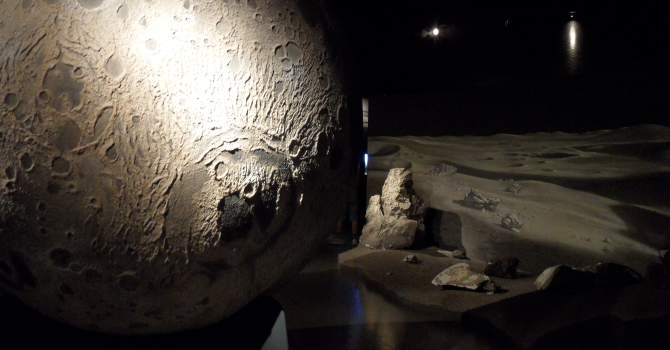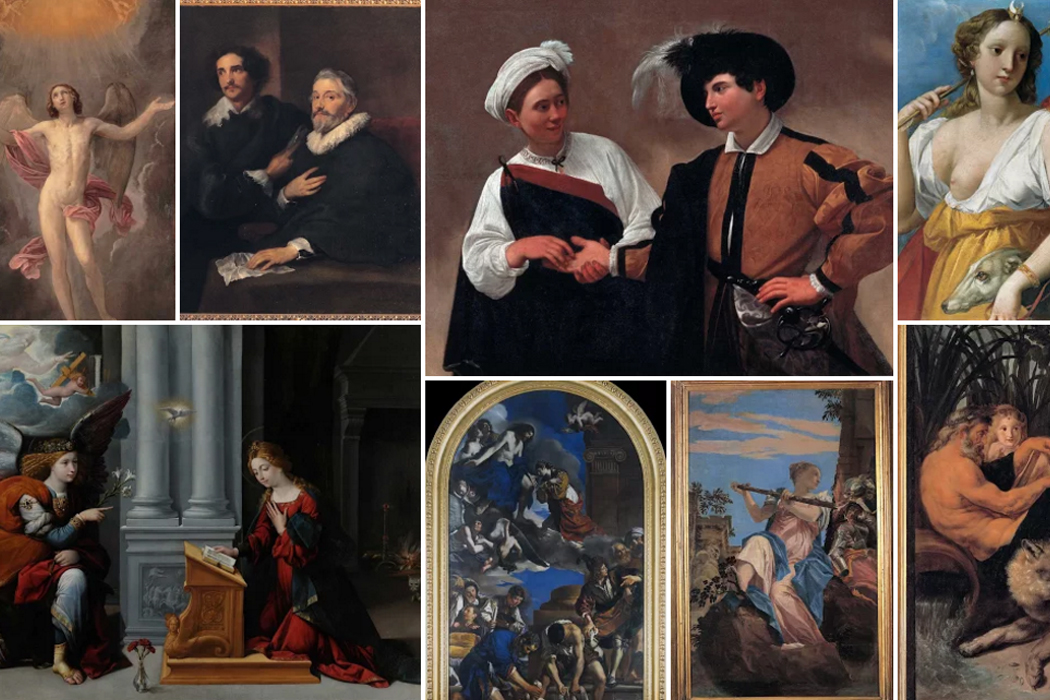Project
The Planetarium of Rome is a meeting point between the individual and the sky, people and astronomy, society and scientific culture. Its mission is to offer everyone a foothold of emotion and knowledge to climb to the stars. To fulfil this mission, the Planetarium of Rome offers its activities to all groups of visitors: families, children, students, adults, and anyone who wants to discover the starry sky and learn more about astronomy. In order to involve the public with high level cultural proposals, the Planetarium intends to be a structure open to cultural exchanges and contaminations, authoritative on a scientific level, inclusive, flexible and attentive to the requests of the public.
The new Planetarium of Rome will be a structure open to cultural exchanges and contaminations, authoritative, inclusive, flexible, responsive, attentive to the demands of the public, and capable of intercepting the spirit of the times in the manner, timing and content of its cultural offerings.


THE PHILOSOPHY OF THE PLANETARIUM
One of the founding elements of the activities developed by the Planetarium over the years, with the aim of fulfilling its mission, is a profound reflection on the communication of science within a planetarium: what it is for, who it is aimed at and how it can be carried out. The answers to these questions concern the relationship between science and society, the role of the Planetarium as a public meeting place for the ideas and protagonists of scientific research, attention to the different target audiences, and the development of an appropriate language.
The fundamental characteristic of the resulting working philosophy is the awareness that science can be effectively conveyed through emotion. All astronomical shows and events produced since the start of activities in 2004 are based on this assumption. The intention is to use the planetarium as a bridge to overcome the useless and obsolete division between scientific culture and humanistic culture, and this takes the form of a continuous search for contamination of content, embracing artistic, literary, historical and musical ideas - from cultural fields other than science - with which to build narrative links, capable of enriching the visitor's experience with meaning because they establish a dialectical relationship with his cultural background and imagination. The underlying objective of the cultural operation carried out by the Planetarium of Rome is to make it a useful foothold for the public to "put into culture" scientific knowledge (according to J. M. Lévy-Leblond's definition), linking it to the so-called "general culture" shared by all, through the storytelling typical of the style and language developed at the planetarium - functional precisely for this purpose. This working philosophy, which can be summed up as promoting the narrative of cultural astronomy, and the language that derives from it are an essential part of the cultural identity of the Planetarium of Rome.
A LIVING MUSEUM
The Planetarium is not a museum in the classical sense of the term: it has no collection to display, nor an independent tour for the visitor. It is a "museum of ideas", its repertoire is a collection of concepts and ways of telling them. Its fruition is entirely based on the interaction between the visitor and the astronomer, and cannot take place in any other way. Consequently, the activities open to the public make up a variety that grows progressively over time, and follow rhythms dictated by the seasons and the phenomena of the sky, which will be the starting point for special events based on the observation of the stars with the naked eye and with a telescope: moments in which the Planetarium "comes out" of its dome to meet the public under the real sky of Rome. In short, the Planetarium is a living museum, constantly changing to involve the public.
THE PLANETARIUM'S TARGETS
By its very nature, the Planetarium attracts an extremely varied public among its visitors, made up of all the social strata, cultural backgrounds and different human sensibilities present in the community of reference, i.e. mainly Rome and the Romans, but not only: studies of the public carried out in past years indicated a catchment area made up of 80% Roman citizens and 18% residents of the rest of Italy, with a small quota of foreign visitors from other countries.
About 2/3 of the visitors are school students, from primary school to university, while the rest of the public is made up of families with children, young people, adults and the elderly. Children are among the main beneficiaries of the Planetarium's activities, but one of the most interesting challenges has been to convey to the users the idea that the Planetarium is not just a facility for children, so much so that the adult public can find under the dome considerable points of discovery and study.
The Planetarium's programming has always taken very careful account of the great heterogeneity of the public that frequents it, and this care also extends to different categories of disabled people, underlining the strongly inclusive nature of the Planetarium's activities.
A 360° RESOURCE FOR THE CITY
The renewal of the projection system with the new immersive full dome technology produces an important advantage: the new Planetarium of Rome gains such versatility as to make it suitable for hosting multimedia content ranging far beyond astronomy: on the digital dome it is possible to project contributions of all kinds, belonging to any scientific and cultural field. Thanks to this technological advancement, it will be possible to talk in the planetarium not only about astronomy but also about geology, biology, chemistry, but also about music, art and entertainment. By taking images or 360° video footage of sites of interest, the Planetarium dome can be transformed into any other environment: the Pantheon dome, a museum hall, a mountain peak. The new digital Planetarium thus becomes a powerful multidisciplinary resource at the service of the city: it can be thought of as a house of science and the arts - "in the round". A museum in the etymological sense of the term.
Just to project the imagination towards the possible applications for this great digital hall, in addition to the stars and the universe in 3D, the reconstruction of the skull of a Tyrannosaurus can hover on the dome, a scan of Michelangelo's David or any other work of art can be admired closer than in its original location, or the navigable mapping of the model of Ancient Rome, and the manipulation of the model of a virus or a molecule. The Planetarium of Rome can now be used to host events - from educational activities to conferences for specialists - covering all the sciences and arts. This makes it an unparalleled resource for enhancing Rome's historical, artistic and cultural heritage and for establishing a connection with all the museums and cultural institutions in the territory, the country and the world.
ACTIVITY FORMATS
Many different types of activities and events can take place in the planetarium. Typically, those who are not planetarium experts tend to define the experience under the dome as a "lesson": this term is now decidedly obsolete, at least with respect to the enjoyment that the Planetarium of Rome has always offered its visitors, oriented towards the model of the "astronomical show", introduced by the Planetarium's scientific curators as early as 2004 and now taken up by all the main Italian planetariums.
An astronomical show is not a lecture, as it does not claim to teach anything in a properly didactic sense. Rather, it aims to arouse the curiosity of visitors, stimulating their desire to learn more, and perhaps offering them tools to explore the proposed themes in greater depth themselves. It is a show because it works on the emotional aspect of the experience in the planetarium as well as on the scientific content, skilfully dosing narration, projection of the sky, images and music: each ingredient is essential for the success of the show, and functional to the transmission of a message.
In addition to shows, a modern planetarium can host numerous other types of activities, developed in different formats: concerts, theatrical performances, video art installations, and of course more classical formats such as conferences, debates and round tables. All these activities have been carried out extensively in the past under the dome of the Planetarium of Rome; now with the digital system the possibilities of use and the quality of the result are even greater. The new technology therefore offers us great scope for innovation: a creative challenge for the future of the Planetarium.
SCIENCE AT THE PLANETARIUM
One of the most exciting features of the new Digital Planetarium is the ability to keep the large scientific databases it has at its disposal for astronomical simulations continually updated. In this way, each new discovery, be it a star, a comet, a new planet or distant galaxies, is immediately incorporated into the system's 'memory', and can take shape and come alive on the celestial vault. Even three-dimensional models of newly launched space probes are available to retrace their trajectories and participate in their subjective exploration of celestial bodies. Thanks to these features, the Planetarium lends itself to narrating astronomy from its most classical and ancient aspects to the latest developments in scientific research and the most up-to-date discoveries made with telescopes from all over the world. The result is a plastic and constantly evolving representation of the universe that surrounds us, capable of satisfying the demands of students and teachers, of entertaining those who enjoy being seduced by the fascination of the sky, of making space exploration interactive and playful for children, and of attracting the interest of any citizen who wishes to peer into the world beyond their own daily horizon.
With this approach, the scientific themes on which the Planetarium's activities will be grafted, enriched over time with increasingly varied programmes in terms of content and objectives, range from the seasonal observation of the starry sky - a classic of every planetarium - and the study of the movements of the planets of the solar system - another classic of astronomy education, much in demand in schools - to more specific and transversal themes, in-depth studies and links with history and current affairs. Among these, the following have a prominent place:
- The relationship between Rome and the stars
- Planet Earth and the climate crisis
- Extrasolar planets and life in space
- The new goals of space exploration
Attention to the close relationship between Rome and the stars, testified to by countless elements in the city's history (works of art, archaeological sites, monuments, the very town planning of certain areas, the research activities of astronomers past and present) provides a fundamental reference context for the scientific story, and allows for the creation of a multitude of cultural connections between Rome and the heavens that best express the meaning of the popularisation of science provided by the Planetarium. In this way, the astronomical events and shows, conceived and produced by the astronomers, acquire a specific and unique character that sets them apart from the programming of all other planetariums.



































